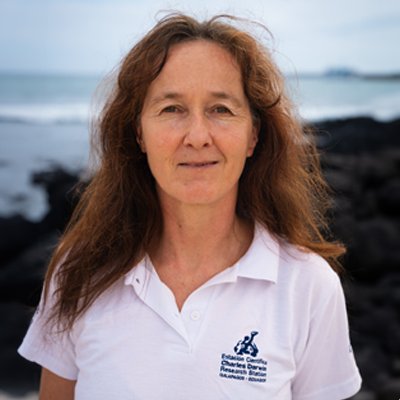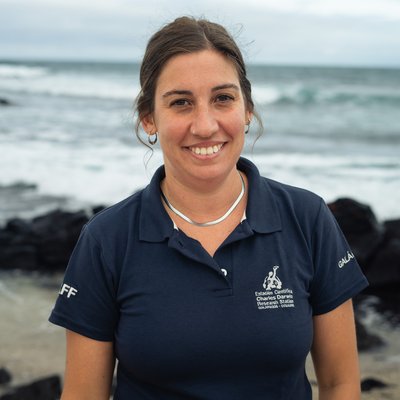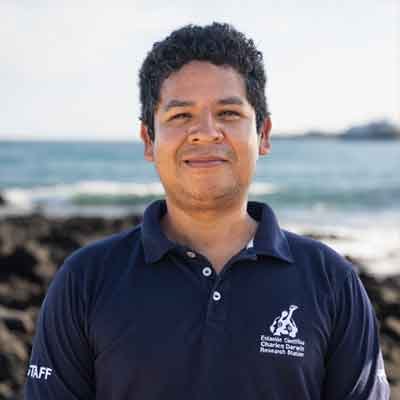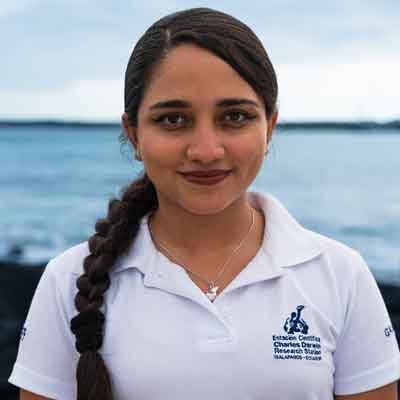It is estimated that 20% of the populations of small landbirds found on the Galapagos Islands are declining or have gone locally extinct. Our scientists work to ensure the long-term conservation of small Galapagos landbird populations for the health of the islands’ ecosystems at large.
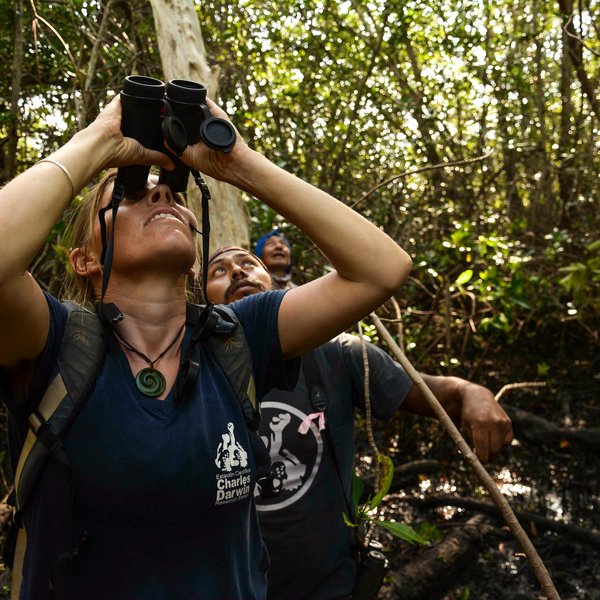
Our team
Birgit Fessl
Principal Investigator - Landbird Conservation
María Igual Beltrán
Principal Investigator - Mangrove Finch Project
David Anchundia
Researcher
Gislayne Mendoza
Laboratory Technician
Agustin Gutiérrez - Research Assistant
We also work closely with the Avian Vampire Fly team:
Donors
Re:wild
Lindblad Expeditions – National Geographic Fund
COmON Foundation
Galapagos Conservation Trust
Friends of the Galapagos Islands Switzerland
Kris & Peter Norvig
Collaborators
Galapagos National Park Directorate, Galapagos Biosecurity Agency, Escuela Superior Politécnica del Litoral (ESPOL), Fundación Jocotoco, Universidad San Francisco de Quito, California Academy of Science, Durrell Wildlife Conservation Trust, Dvorak Michael, Flinders University, Island Conservation, Nemeth Erwin, San Diego Zoo Global, Tui de Roy, University of Arizona, University of British Columbia, University of Cambridge, University of Cincinnati, University of Connecticut, University of Cornell, University of Exeter, University of Guleph, University of Life Science Vienna, University of Massachusetts, University of Missouri, Saint Louis, University of San Francisco, University of Utah, University of Vienna, Wendelin Beate
The challenge
There are 29 species of small landbirds in Galapagos of which 90% are endemic, which means they are found nowhere else in the world. These include the iconic Darwin’s finches and charismatic mockingbirds. In spite of extensive studies on the evolution of Darwin’s finches and other birds, before our program began in 2014, surprisingly little was known about how many birds are found on each island, and whether their populations are thriving.
Surveys carried out by our scientists have so far discovered that 18 small landbird species have declined or disappeared on at least one of the islands they inhabit. This means that at least 20% of the small landbird populations in Galapagos have become extirpated (locally extinct) or are at risk from doing so. This decline is due to nestling mortality caused by the parasitic avian vampire fly (Philornis downsi), habitat degradation caused by human activities and invasive plants, predation by other invasive species such as cats and rats, and emerging diseases. Declines are most apparent on inhabited islands, where action is most urgent.
What we are doing
To reverse population declines as quickly as possible, the Charles Darwin Foundation (CDF) is working with the Galapagos National Park Directorate (GNPD) and a large group of collaborators to investigate measures to increase the resilience of at-risk, iconic bird species. Our ultimate goal is to ensure the long-term conservation of small Galapagos landbird populations for the health of the islands’ ecosystems at large.
Specific program objectives
- Establish a long-term monitoring program to detect and respond to changes in the status and health of the populations of small landbirds;
- Identify the factors that are affecting the well-being of threatened small landbirds;
- Develop and test, using a holistic approach, conservation actions for restoring populations or species of landbirds with the highest declines and most at risk from extinction, such as the Mangrove Finch; and
- Work with local stakeholders to develop and test protocols for rewilding bird species on islands where they have gone extirpate
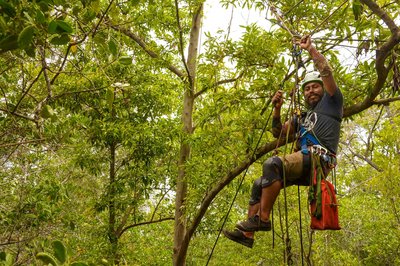
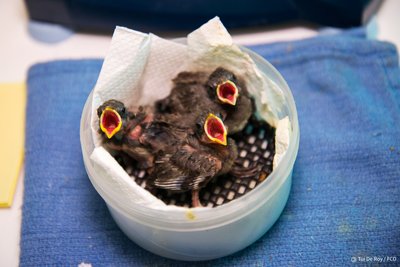
Why it matters
The diversity of small landbirds in Galapagos is quite astonishing and our goal is to make sure that this continues. In order to survive and adapt, many species have evolved to specialize in specific habitats or to feed on certain food sources. For example, the Mangrove Finch, with only some 60 individuals left in the world, is found only in coastal mangroves on Isabela Island, where it feeds exclusively on invertebrates living in the trees and in the leaf litter. This specialization makes them particularly vulnerable to changes in their environment.
Small landbirds are essential to the health of the islands’ ecosystems. They play a critical role as seed dispersers and pollinators of Galapagos plants. Others are predators of invertebrates helping to keep populations in balance, such as ticks found on giant tortoises. While searching for food, landbirds also help aerate the soil and leaf litter, which helps the cycling of nutrients in these extraordinary ecosystems.
Key species we are protecting
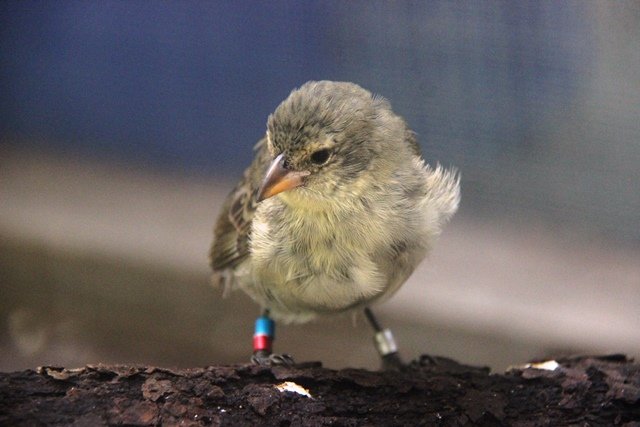
Once widespread throughout the mangrove forests of Isabela and Fernandina Islands, the endemic Mangrove Finch, Camarhynchus heliobates, remains in a habitat of only 30 hectares (74 acres) on Isabela Island, making it one of the most range-restricted birds in the world.
The Mangrove Finch is teetering on the brink of extinction. With an estimated 60 individuals left in the world, urgent conservation action is needed to prevent the extinction of one of the world’s most Critically Endangered species. Main threats are egg predation by introduced rodents and chick mortality caused by the avian vampire fly. Until we have effective and sustainable strategies for controlling this introduced parasite, we need to continue in-situ protection of Mangrove Finch nests.
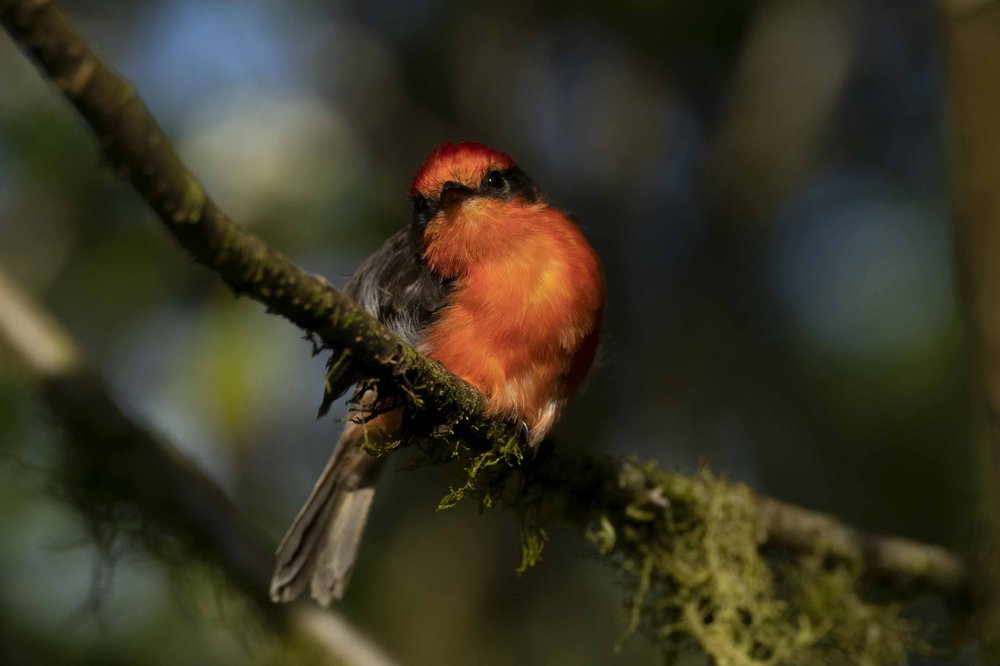
The Vermilion Flycatcher was recognized as two separate species in 2016. Sadly, the San Cristobal Vermilion Flycatcher went extinct before it was recognized as a species. The Little Vermilion Flycatcher is found throughout the archipelago but has vanished in the last 40 years from two, and possibly three islands. Additionally, if we are not able to find a way to restore populations on Santa Cruz Island, it is in danger of becoming locally extinct there too. With less than 20 breeding pairs left in the highlands of this island, urgent conservation action is needed. The main threats to this emblematic bird are invasive plant species that have caused habitat degradation, predation by rats and cats, and parasitism by the deadly avian vampire fly.
Our impact
Mitigating the threat of the avian vampire fly
Our scientists, together with the multinational collaborative Philornis downsi team, have developed short-term methods to reduce the number of fly larvae in bird nests of several bird species to protect hatchlings from the highly invasive and parasitic avian vampire fly. This has required thinking outside the box and quite a bit of creativity, but has resulted in increased breeding success of various Darwin’s Finches species and the Little Vermilion Flycatcher. These short-term measures are crucial for protecting the hatchlings of the most threatened bird species while investigations continue to evaluate long-term control methods such as biological control using the fly’s natural enemies.
Preventing the extinction of the Mangrove Finch
Since 2006, CDF has been working alongside the GNPD to conduct hands-on conservation management: controlling rats and cats, trialing translocation and head-starting, and more recently protecting nestlings from the parasitic avian vampire fly by treating infested nests.
The first conservation management action was to implement a program to control rats. This achieved a significant reduction in nest predation. Unfortunately, though most of the chicks survived, they then became targets of the avian vampire fly.
To protect hatchlings from this deadly fly, a technique called head-starting was implemented from 2014 to 2017, where eggs were carefully transported to our research station and hatchlings reared in quarantine until they were ready to be released back into the wild. A total of 39 hand-reared juveniles were taken back to their home on Isabela Island. This was a critical step to ensure reproductive success of this tiny population but was logistically challenging and expensive.
This technique was replaced with a new method that was developed in 2017, which involved injecting an insecticide into the base of the nest where the fly larvae reside. In the last six years this has resulted in the release of at least 51 fledglings, which has helped maintain population numbers steady. This work carried out by CDF scientists and GNPD rangers is incredibly labor intensive, but necessary until a long-term control method is found to reduce avian vampire fly populations.
Safeguarding the Little Vermilion Flycatcher
The Little Vermilion Flycatcher population on Santa Cruz Island has faced a steady decline due to habitat degradation. In response, an ambitious conservation plan was implemented to boost reproductive success and reverse this trend.
During this work, we discovered that the invasion of the Vermilion Flycatchers’ habitat by invasive blackberry significantly reduces the nutritional quality of its food as parents have to expend considerable additional energy searching for food sources, leading to high levels of egg abandonment. However, through our dedicated work, we have achieved promising results. Clearing large swathes of blackberry has led to more efficient foraging by adult parents, leading to an encouraging increase in egg hatching rates. We have further bolstered these efforts by implementing nest treatments to combat avian fly parasitism and by controlling rat populations. This combined approach has yielded encouraging results, with the survival of at least 33 fledglings.
Nevertheless, population numbers remain low and new genetic data revealed limited genetic variability within the population, posing a threat to long-term survival. The next step in the plan is to evaluate the possibility of “genetic rescue” by translocating individuals from closely related populations on other islands.
Monitoring for effective management
Our scientists have collected high-quality baseline data on the status of landbirds corresponding to 90% of all landbird populations in Galapagos - providing an important baseline for evaluating the status of bird species in the archipelago, and identifying species or populations in need of intervention.
This critical data also allows us to compare the status of birds before and after management interventions, and evaluate success. For example, we were able to compare the status of birds on Pinzon Island before and after rats were eradicated, finding that several bird species had returned to the island after the eradication. Thanks to our baseline data from Floreana, we will be able to document any changes in the landbird population after the removal of invasive predators.
Involving the community in bird counting helps raise awareness and inspire locals to become birders. Every year we work with local partners to hold bird counts and offer outings with experts to count birds. This includes the Christmas Bird Count and Global Big Day.
Assessing avian diseases
Over the last two years, we have been working to determine the health status of Galapagos landbirds using molecular techniques. We have a laboratory at our research station that is using high-tech diagnostics such as PCR to identify which pathogens are present in these species.
This project uses a One Health approach that links human and avian health to the health of the entire ecosystem. Avian diseases are of great importance for public health, with some being zoonotic (shared between birds and humans, e.g., Avian Influenza). Understanding the pathogens that are present in birds from different islands and species provides key information to inform management decisions and restoration plans on the archipelago.
For example, the Floreana Project led by our partner Jocotoco Foundation, is one such effort that is relying on this baseline data for its ambitious rewilding project. So far, more than 300 birds from 5 islands have been tested for toxoplasmosis, adenovirus, herpesvirus, and mycoplasmosis. These results will help to better understand potential new threats for the health of wild and domestic birds as well as human health, and influence management decisions at large.
Training the ornithologists of the future
Have you ever tried to identify a bird by its song? It's hard! Small landbird monitoring requires a team of skilled birdwatchers who can also identify the songs of birds. Landbird conservation activities also require a skill set for handling and studying birds. Because of this, we are putting a huge amount of effort into training early career biologists so that there is a large pool of ornithologists trained in Galapagos to continue this important work. Every year, between 5 and 10 volunteer or young biologists work within the different project parts and receive training. Some of these biologists are now studying for their Masters or Doctorates using the research that they are doing on Galapagos landbirds.
Why you should support us
As the only organization in Galapagos that conducts long-term surveys of small landbirds, our program is an essential part of the local conservation puzzle, and critical for the effective implementation of rewilding projects (such as on Floreana Island) and implementation of robust management plans.
At the same time our work to protect bird populations on the brink of extinction, such as the Mangrove Finch or Little Vermilion Flycatcher, is urgent and vital to maintaining Galapagos ecosystems in balance. This work is resource intensive
Here are some specific ways that your sponsorship can help:
- Support our long-term landbird surveys to provide a critical baseline for conservation planning.
- Help us protect the Little Vermilion Flycatcher and other endangered landbirds in the Scalesia forest.
- Fund our work to conserve the Mangrove Finch and other threatened species, until permanent and sustainable control methods can be developed.
- Help us purchase necessary gear for the protection of nests from the avian vampire fly such as endoscopic cameras, nest spritzers and binoculars.
- Support our training of young Ecuadorian biologists every breeding season to ensure the next generation of ornithologists can carry on the work.
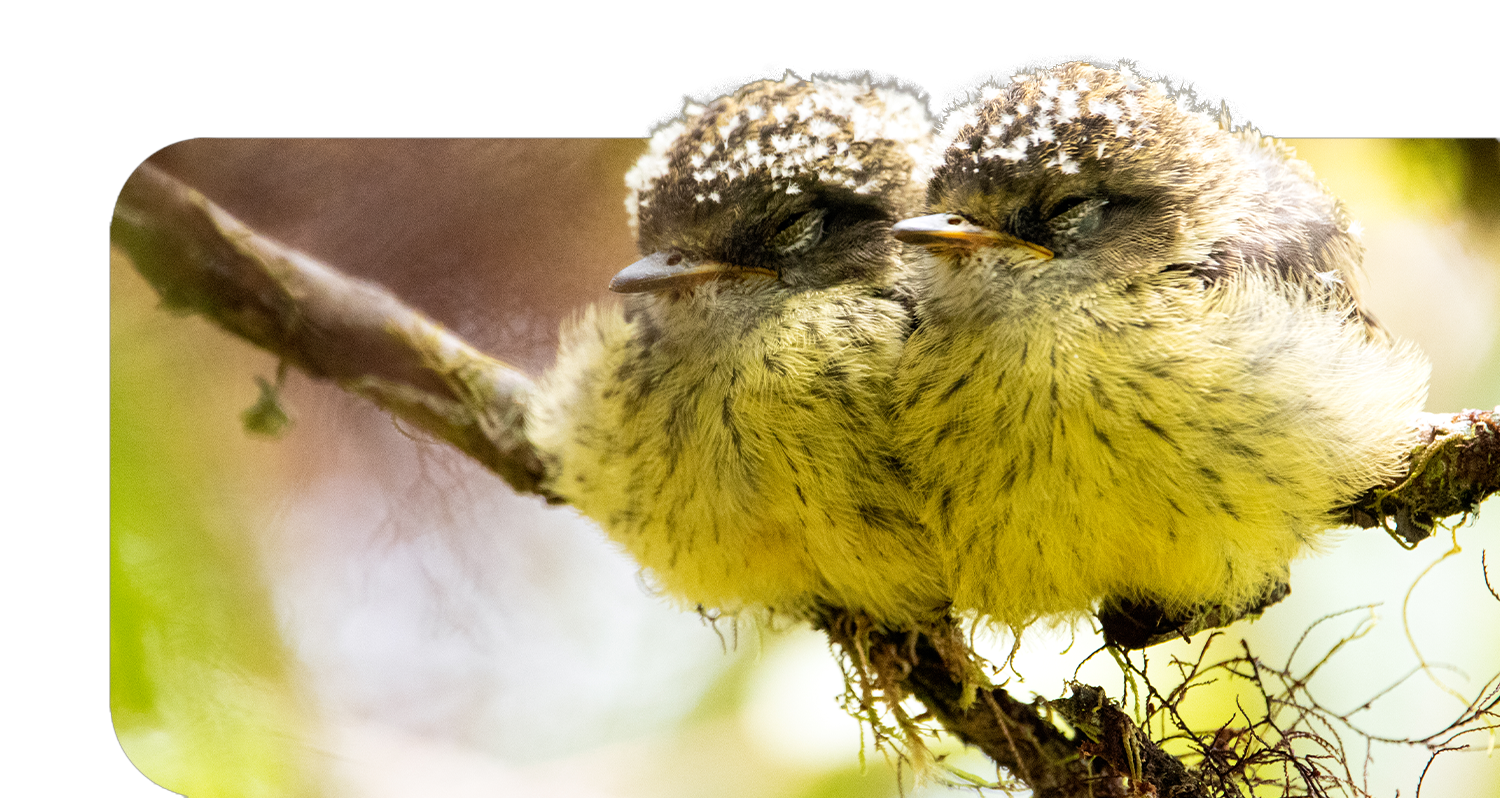

Protect Galapagos, Impact the World
The impact you make on this small ecosystem of enormous biodiversity is part of a larger footprint you are leaving for the world's future. Join us on our mission to safeguard one of our planet’s most important natural treasures through science and conservation action by making a donation today. Thank you for making an impact with us.





